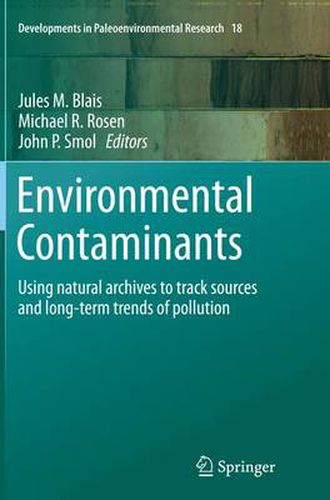Readings Newsletter
Become a Readings Member to make your shopping experience even easier.
Sign in or sign up for free!
You’re not far away from qualifying for FREE standard shipping within Australia
You’ve qualified for FREE standard shipping within Australia
The cart is loading…






This title is printed to order. This book may have been self-published. If so, we cannot guarantee the quality of the content. In the main most books will have gone through the editing process however some may not. We therefore suggest that you be aware of this before ordering this book. If in doubt check either the author or publisher’s details as we are unable to accept any returns unless they are faulty. Please contact us if you have any questions.
The human footprint on the global environment now touches every corner of the world. This book explores the myriad ways that environmental archives can be used to study the distribution and long-term trajectories of chemical contaminants. The volume first focuses on reviews that examine the integrity of the historic record, including factors related to hydrology, post-depositional diffusion, and mixing processes. This is followed by a series of chapters dealing with the diverse archives and methodologies available for long-term studies of environmental pollution, such as the use of sediments, ice cores, sclerochronology, and museum specimens.
$9.00 standard shipping within Australia
FREE standard shipping within Australia for orders over $100.00
Express & International shipping calculated at checkout
This title is printed to order. This book may have been self-published. If so, we cannot guarantee the quality of the content. In the main most books will have gone through the editing process however some may not. We therefore suggest that you be aware of this before ordering this book. If in doubt check either the author or publisher’s details as we are unable to accept any returns unless they are faulty. Please contact us if you have any questions.
The human footprint on the global environment now touches every corner of the world. This book explores the myriad ways that environmental archives can be used to study the distribution and long-term trajectories of chemical contaminants. The volume first focuses on reviews that examine the integrity of the historic record, including factors related to hydrology, post-depositional diffusion, and mixing processes. This is followed by a series of chapters dealing with the diverse archives and methodologies available for long-term studies of environmental pollution, such as the use of sediments, ice cores, sclerochronology, and museum specimens.